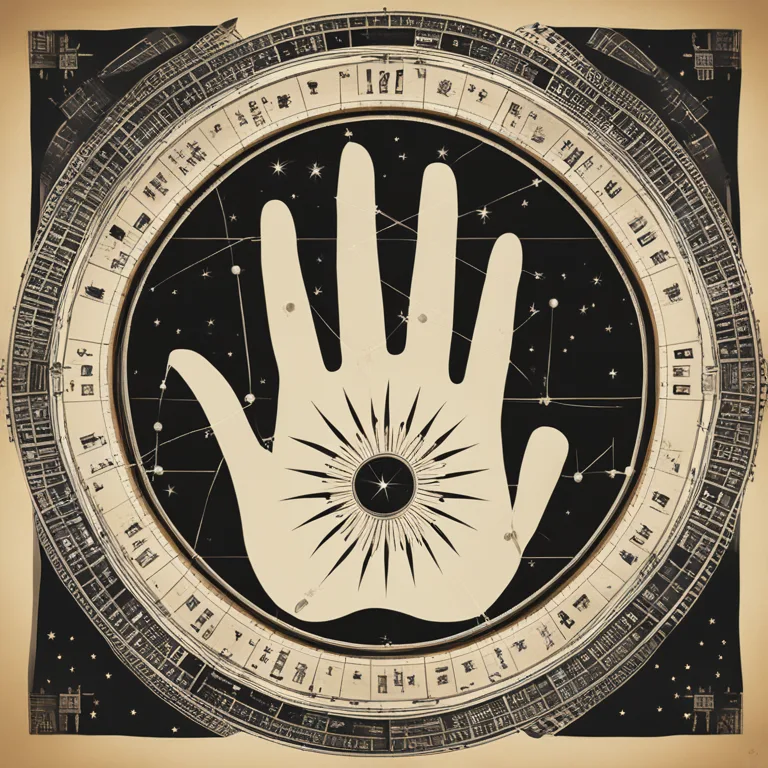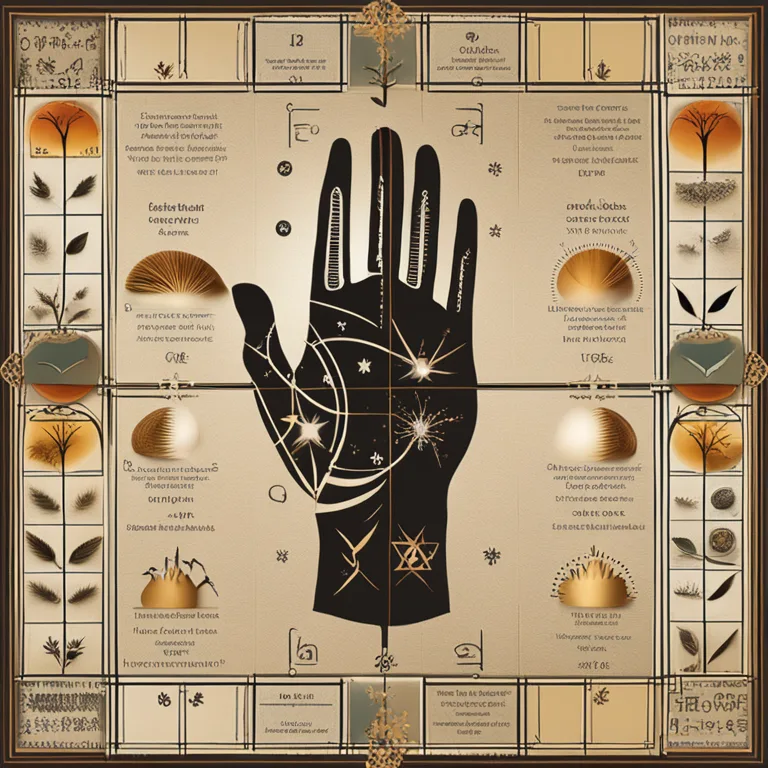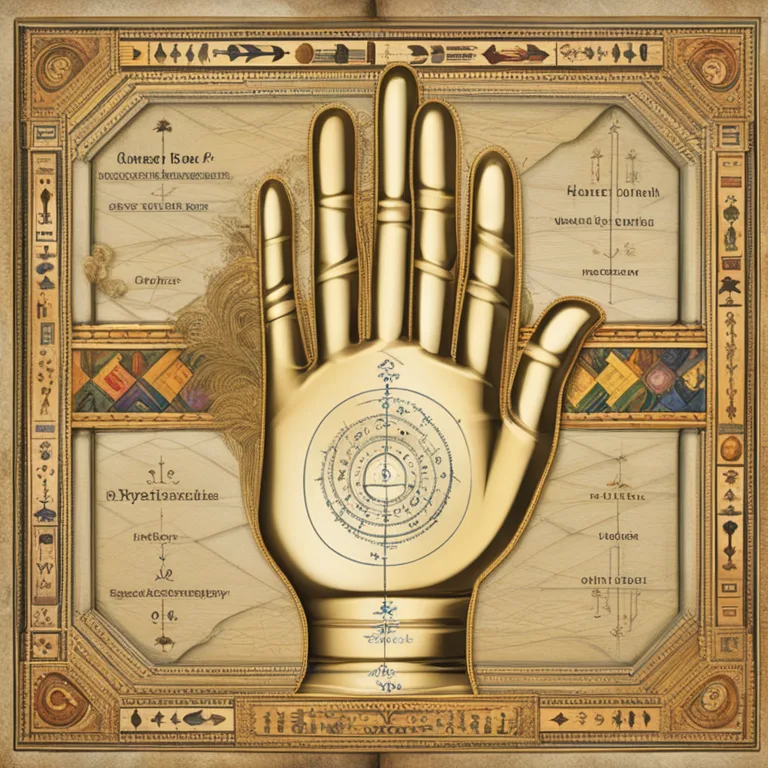
Palmistry Insights: Fascinating Hand-Reading Facts
Explore the compelling world of palmistry with key facts that explain hand-reading's principles and application in modern practice.
article by Nora Pennington
A Brief History of Palmistry
Palmistry, or chiromancy, has been practiced in various cultures for thousands of years, tracing back to ancient India. It was later adopted in Chinese, Tibetan, Persian, and other astrological systems. Initially used for predicting one's future, it gradually evolved to include personality assessment and guidance. By 2024, palmistry has become a synthesis of age-old traditions and contemporary psychological insights, gaining popularity in the realm of personal development and self-exploration.

Palm Lines and Their Significance
The lines on your palm are more than random creases; they are believed to tell stories about your life. Major lines include the heart line, head line, life line, and fate line. Each of these lines is said to relate to distinct aspects of one’s existence such as emotions, intellect, vitality, and life path respectively. While skeptics may doubt, enthusiasts are drawn to the intricate interpretations these lines offer, which continue to intrigue the modern mind.

The Myth vs. Reality of Palmistry
Palmistry, despite its mystical reputation, does not claim to forecast the future with absolute certainty. Instead, contemporary practitioners suggest that palm readings can offer tendencies and potentials based on the individual's characteristics. This approach aligns palmistry closer to psychological profiling than to predestined fate, adapting it to the preferences of a society that values self-agency and scientific rationalism as of 2024.

Hand Shapes and Elemental Associations
In palmistry, hand shapes are categorized into four elemental types: earth, air, water, and fire. These elements reveal a person's temperament. Earth hands denote practicality, air hands suggest intellectual predilections, water hands are associated with emotional and creative attributes, while fire hands indicate impulsiveness and leadership qualities. This elemental classification is a prime example of how palmistry has blended with other metaphysical systems to provide a holistic perspective.

Palmistry in Digital Age
In the digital age, palmistry has not only survived but thrived, integrating with technology to reach a wider audience. From online readings to apps analyzing palm prints, enthusiasts can access palmistry from anywhere. The field is also benefiting from the digital sharing of knowledge, with virtual workshops and webinars hosted by experts being more accessible than ever. This renewed interest ensures that palmistry's ancient wisdom stays relevant in today's tech-driven society.
Learning Palmistry in Modern Times
For those interested in learning palmistry today, opportunities abound. Workshops, courses, and books are widely available, offering instruction from basic to advanced levels. Moreover, the internet has made learning more flexible, with myriad resources catering to varying levels of interest and expertise. Personalized mentorship through online platforms has democratized the learning process, connecting novice readers with seasoned experts globally.
Published: 1/3/2024
Modified: 1/3/2024
More predictions
Come back here soon to learn more about yourself and your future


Palmistry Clues to Predicting Parenthood
Delve into the palmistry lines associated with predicting childbirth and learn what your hands may reveal about future family life.


The Origins of Palmistry: An Ancient Practice
Delve into the fascinating beginnings of palmistry—the ancient art of hand reading for insights into character and destiny.


Palmistry Insights on Love: Counting Your Relationships
Discover what palmistry reveals about your romantic journey. This article shares insights on interpreting your palm lines for potential relationships.